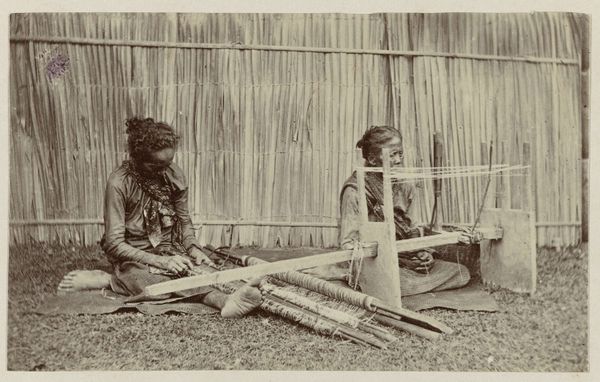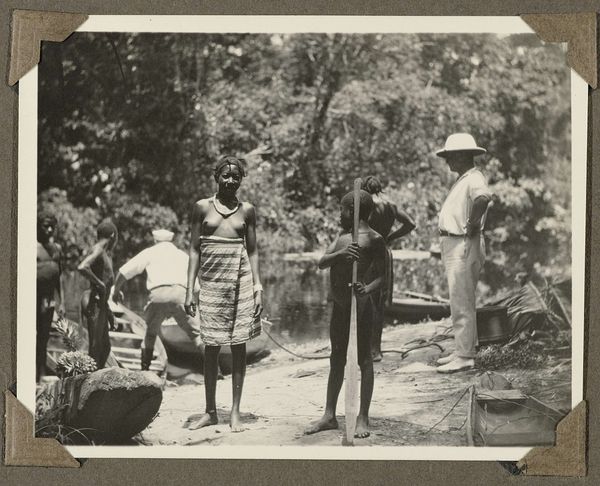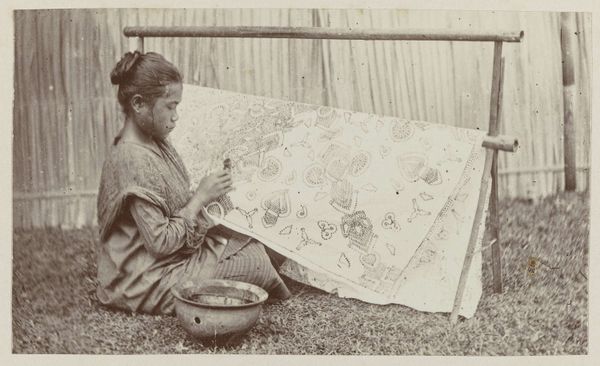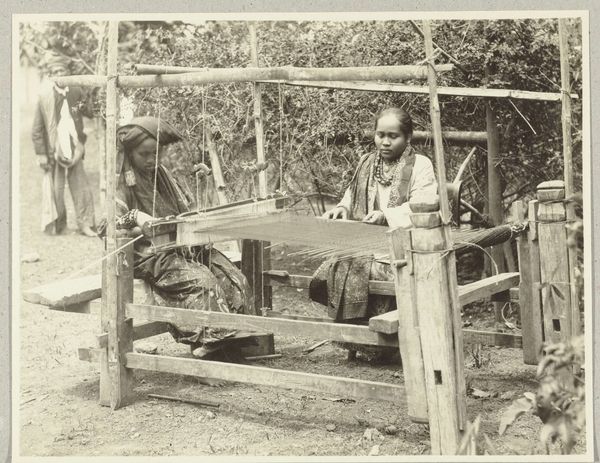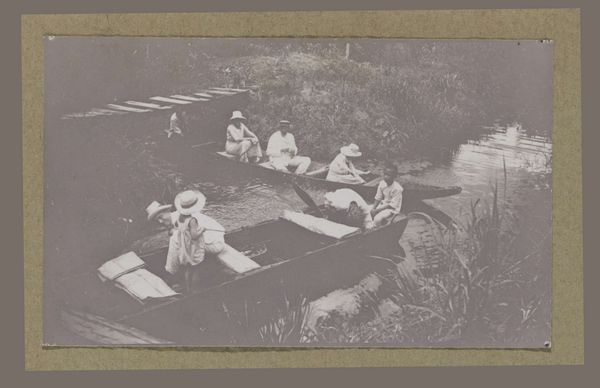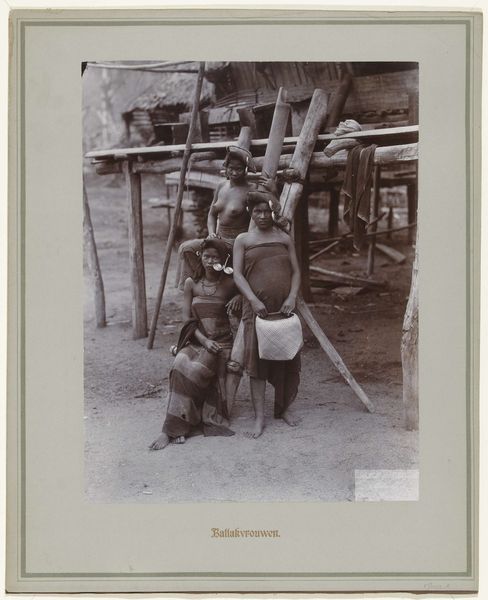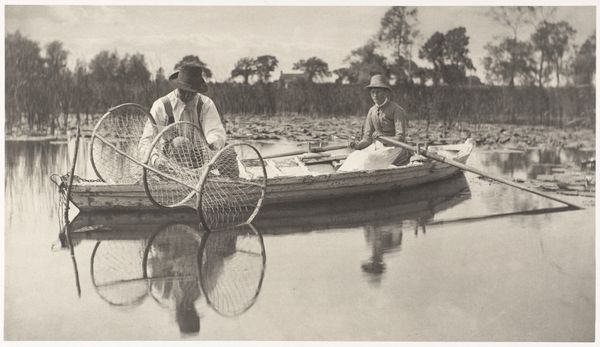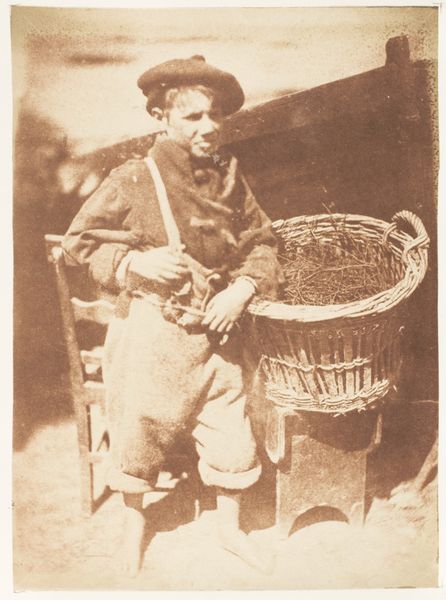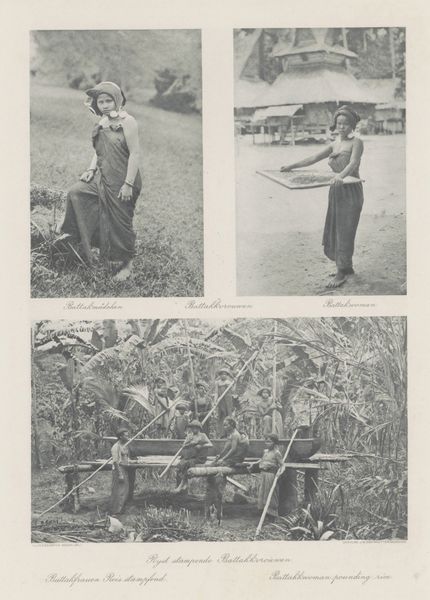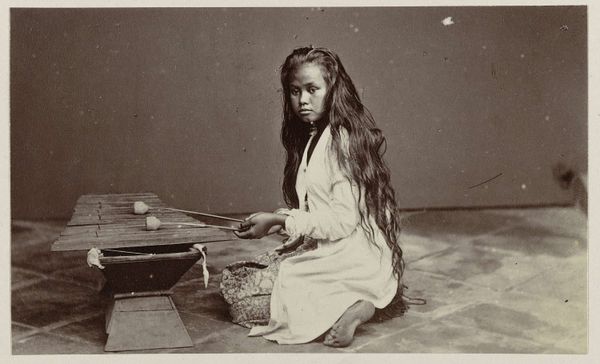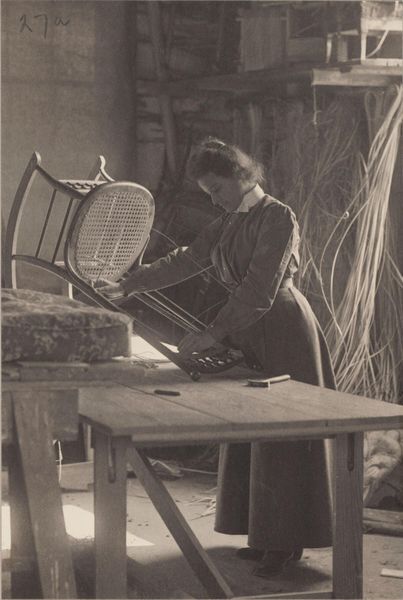
print, photography
#
portrait
#
print photography
#
still-life-photography
# print
#
asian-art
#
photography
#
historical photography
#
realism
Dimensions: height 158 mm, width 218 mm
Copyright: Rijks Museum: Open Domain
Curator: This is "Javanese Woman Weaving Cloth on a Loom," a photographic print by Kassian Céphas, dating from around 1867 to 1910. It's currently held in the collection of the Rijksmuseum. Editor: The texture of the print and the simplicity of the scene give it a calm, almost meditative quality. The horizontal lines created by the loom and the woman's striped top create a structured, rhythmic feel. Curator: Absolutely. Céphas, as a Javanese photographer, occupies an interesting position. He's documenting Javanese life for presumably Western audiences, but doing so from an insider's perspective, navigating those colonial power dynamics. Think about the implications: who is invited into this historical narrative, and on what terms? Editor: It's also interesting to consider the materiality of this cloth. Who would have worn it? What processes were involved in sourcing the fibers, dyes, and then the labor involved in weaving? Curator: Exactly! The photograph presents the final stage but the true value inheres within the lengthy manufacture, not to mention the cultural significance that such a textile would carry in Javanese society. How was that labour valued – or, perhaps more accurately, *undervalued* – within a colonial economic framework? Editor: Thinking about value, the photograph also creates a sort of visual economy. We see this woman’s labor, yet her face is in profile. It's a representation that mediates access to her and her lived reality, turning her existence into something available for observation, potentially reinforcing existing power structures. Curator: And we see the same principles operating even now, with photography's continued impact in tourism. As we, contemporary viewers, examine this piece, what responsibilities do we bear when encountering these images from the past? Editor: Indeed. And thinking of the tangible reality of weaving in the 19th century makes me appreciate even further the craftsmanship, patience, and community bound up within this image. It serves as a strong reminder of human connection and effort, far removed from modern, automated processes. Curator: Ultimately, both the medium of photography and the craft of weaving provide tangible links to understand the history of cultural representation. Editor: It pushes us to consider not only what we see, but what processes, both physical and socio-political, gave rise to it.
Comments
rijksmuseum about 2 years ago
⋮
Photographs of traditional crafts were popular with European visitors to Asia. The sultan of Yogyakarta’s court supported many traditional cotton and silk weavers. This young woman uses a backstrap loom, keeping tension on the warp threads by leaning her back against a wooden beam.
Join the conversation
Join millions of artists and users on Artera today and experience the ultimate creative platform.
